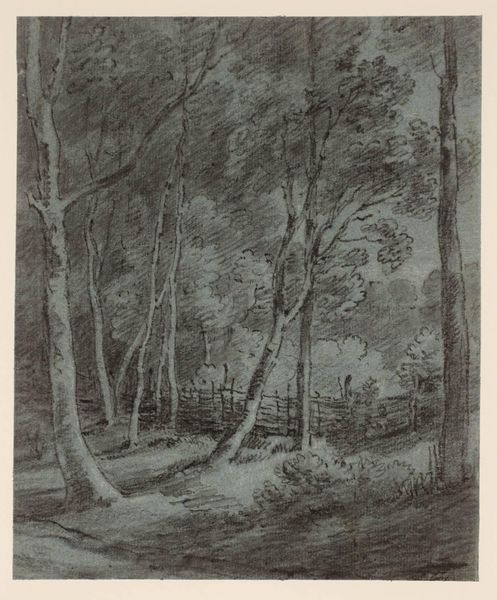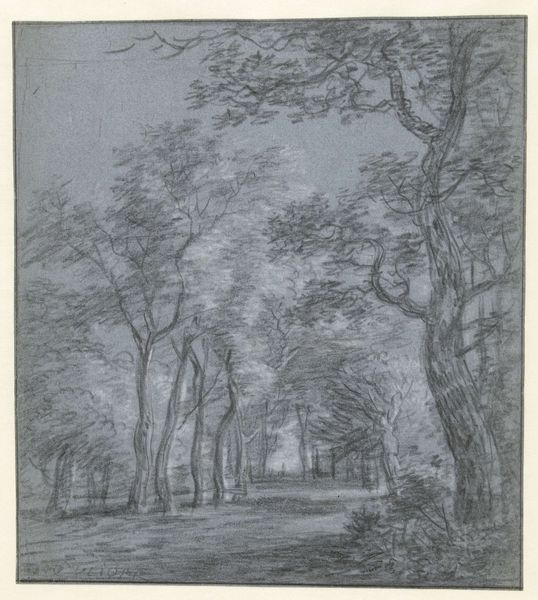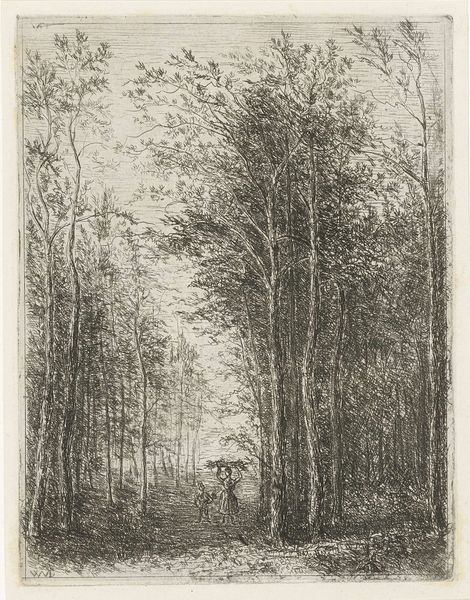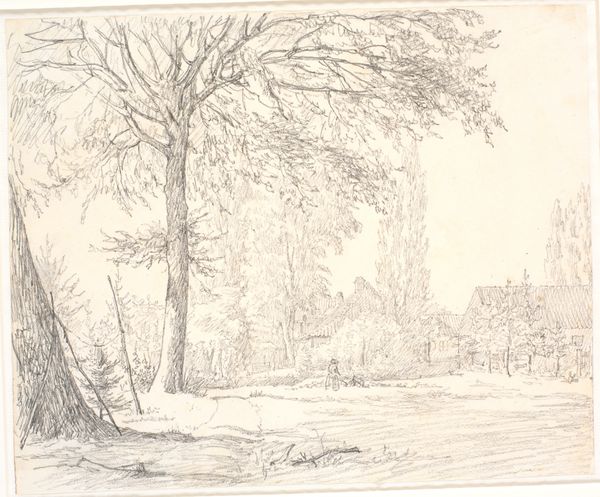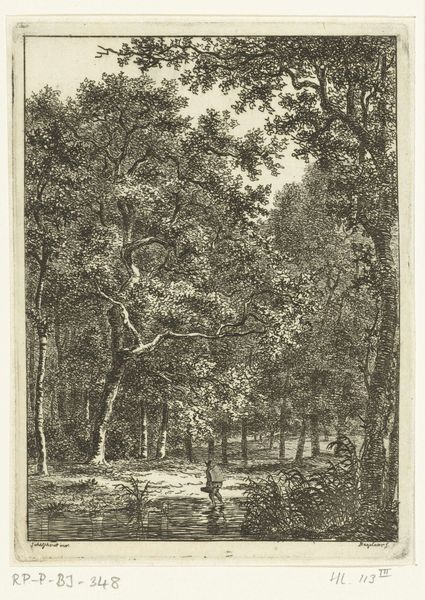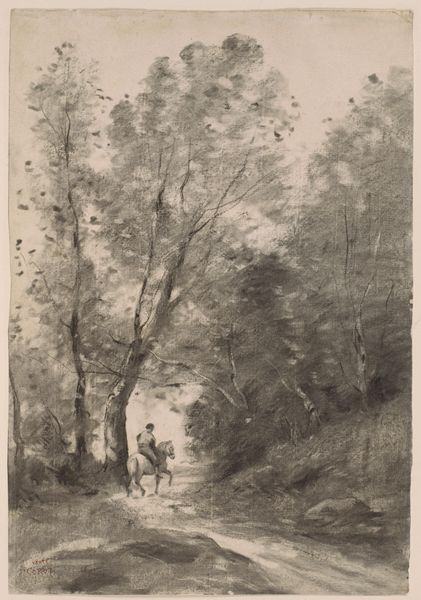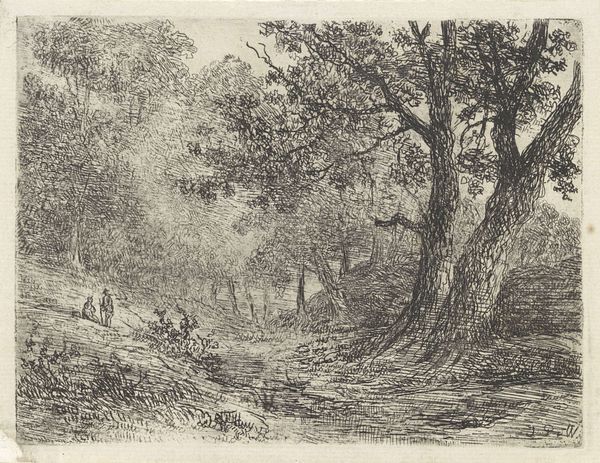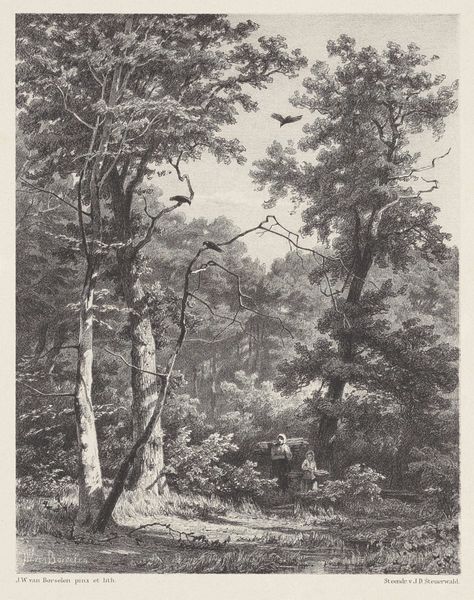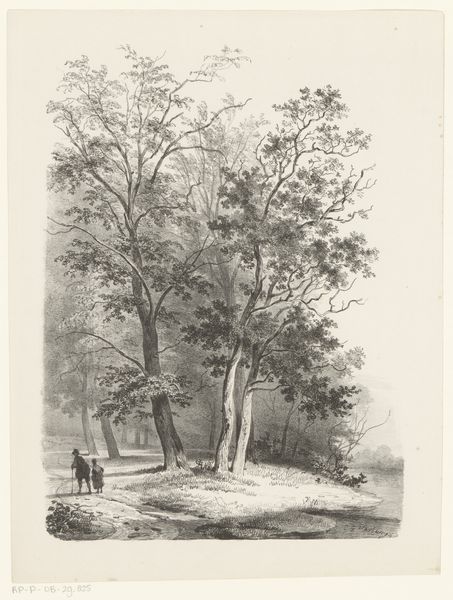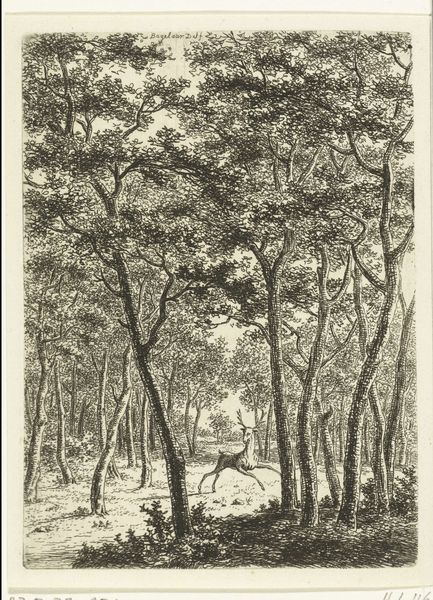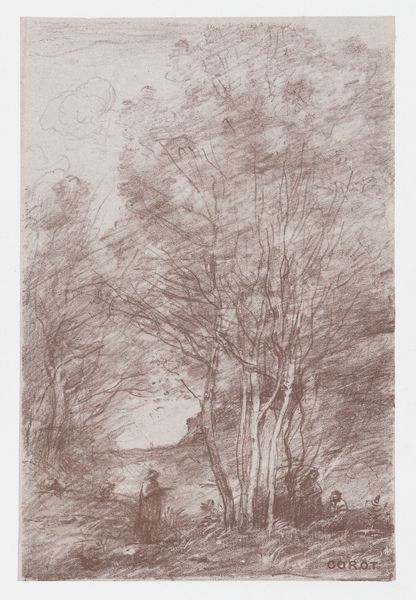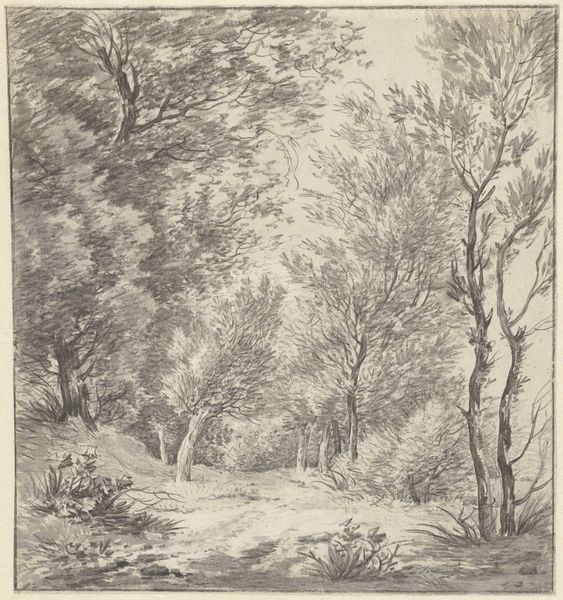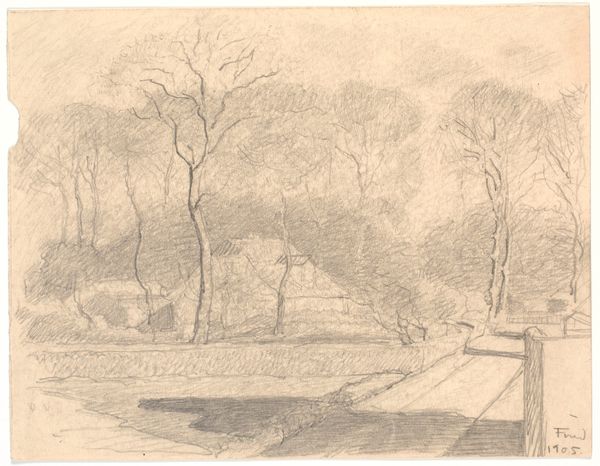
Gezicht in het bos van het hof te Bergen, bij Heiloo Possibly 1839
0:00
0:00
hendrikabrahamklinkhamer
Rijksmuseum
drawing, pencil
#
pencil drawn
#
drawing
#
pen sketch
#
pencil sketch
#
landscape
#
forest
#
romanticism
#
pencil
#
realism
Dimensions: height 145 mm, width 108 mm
Copyright: Rijks Museum: Open Domain
Curator: Hendrik Abraham Klinkhamer's pencil drawing, "Gezicht in het bos van het hof te Bergen, bij Heiloo", or "View in the Woods of the Court of Bergen, near Heiloo" likely dates from 1839, and it resides here at the Rijksmuseum. Editor: Immediately, I’m struck by how light it is. Almost ethereal. There's a haziness, a sense of a dreamscape even though it depicts something real. It feels very Romantic. Curator: It is very much a product of its time. Landscape art during the Romantic era often sought to evoke strong emotional responses. Nature was seen as sublime, a force capable of inspiring awe and introspection. Editor: Right, and it speaks to the way we were—and sometimes still are—invited to see nature, as something separate from us, as a backdrop, a source of emotional or spiritual uplift. There are two men depicted, yet I feel invited to place myself into this space. Curator: The solitary figure walking away from us along the path emphasizes this individual encounter with nature. The choice to render it in pencil, allows for subtle gradations in tone, creating that very haze that you identified. It captures a specific moment, perhaps even the effects of the morning mist or light filtering through the leaves. Klinkhamer shows how Bergen was transforming into an area frequented by artists. Editor: Is there a class dimension there? It seems to me like only someone with a certain amount of leisure could enjoy these kinds of experiences. Curator: Undoubtedly. The drawing itself suggests access to materials and training. This "nature" was really experienced through the lens of privilege, informing who could appreciate and represent it. It also points to the historical shift to create parks. The parks were accessible for citizens, however, the poorer members of the population still did not have the means or the time to escape work. Editor: It does make me consider who is able to access "nature" today, doesn't it? And the way these idealized depictions might contrast with the reality of environmental degradation. Even something seemingly simple carries these layered meanings. Curator: It offers a moment of escape, but also reflection on how these curated views of the natural world, like the Hof te Bergen, still shape our own contemporary experiences and perspectives on land ownership, and on whose environment matters. Editor: It encourages me to reflect critically on not only what is included but who and what has been omitted.
Comments
No comments
Be the first to comment and join the conversation on the ultimate creative platform.
